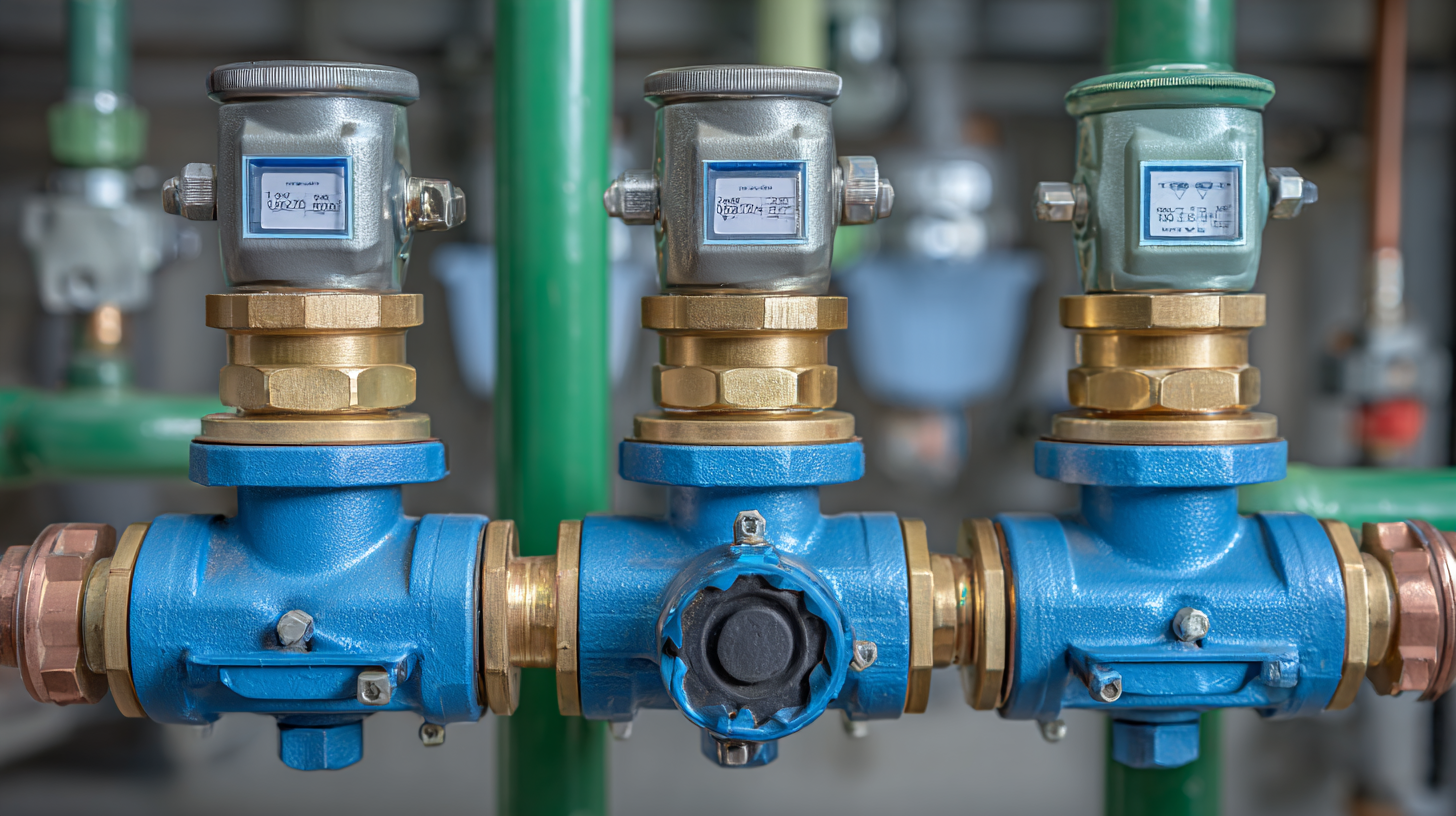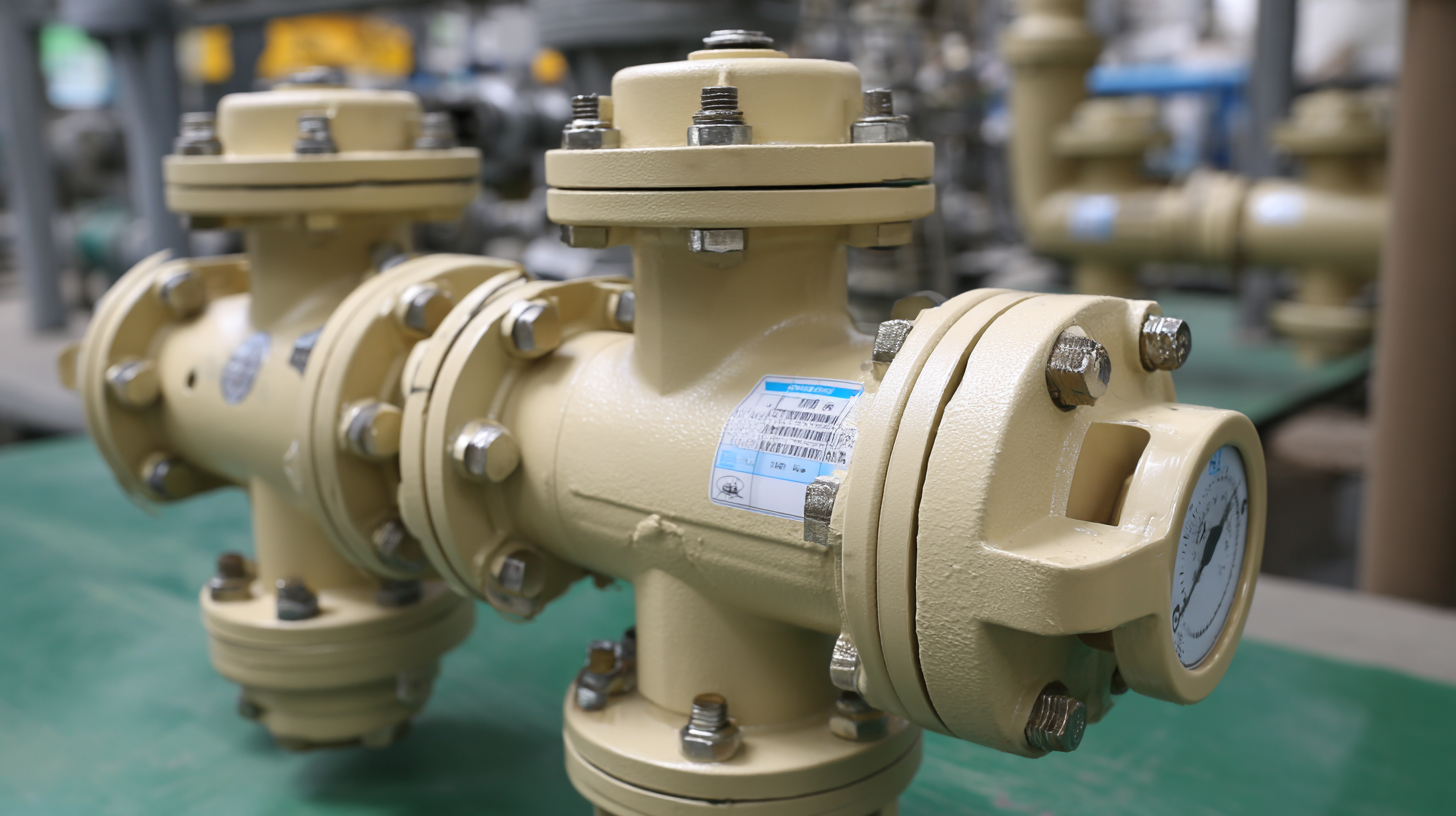
In the ever-evolving landscape of plumbing solutions, the significance of water pressure reducing valves has come to the forefront, especially as global demand for efficient water management systems rises. According to a recent report by the International Water Association, nearly 30% of the world’s water supply is wasted due to inefficient pressure regulation. This highlights the crucial role of water pressure reducing valves in maintaining optimal pressure levels, enhancing system longevity, and conserving resources. As manufacturing standards improve, particularly in countries like China, these valves have quickly become integral to both domestic and international markets. With the right certifications, importers and exporters can ensure they are sourcing products that not only meet safety and performance standards but also support sustainable practices. In this guide, we will explore the top five best water pressure reducing valves currently on the market, emphasizing their importance in modern plumbing infrastructure globally.

In the ever-evolving water pressure reducing valve market, identifying quality suppliers is crucial for consumers and manufacturers alike. According to a recent report by Grand View Research, the global market for water pressure reducing valves was valued at approximately $1.3 billion in 2022 and is projected to grow at a compound annual growth rate (CAGR) of 6.5% through 2030. As demand for efficient water management solutions rises, so does the responsibility to ensure these valves meet stringent quality standards.
To navigate this competitive landscape, buyers should emphasize certifications such as ISO 9001 for quality management systems and CE marking for compliance with European health, safety, and environmental standards. Data from the International Standards Organization (ISO) indicates that companies adhering to these certifications often demonstrate improved operational efficiencies and lower failure rates. Furthermore, suppliers with certifications from the American Society of Mechanical Engineers (ASME) or the American National Standards Institute (ANSI) can be trusted to provide reliable products that enhance the longevity and performance of plumbing systems. By focusing on certified suppliers, businesses can safeguard their investments and contribute to sustainable water usage practices.
When importing water pressure reducing valves, it is crucial to understand the key certifications that ensure product quality and safety. Certifications such as the American Society of Mechanical Engineers (ASME) and the International Organization for Standardization (ISO) are essential for validating the performance and reliability of these valves. ASME certification guarantees that the product adheres to the industry's stringent standards, enhancing consumer confidence. Meanwhile, ISO certification indicates that the manufacturing process meets international quality management standards, which is vital for export markets.
Additionally, for compliance in specific markets, certifications like the Underwriters Laboratories (UL) and the European Conformity (CE) mark play a significant role. UL certification ensures that the valve has been tested for safety and performance, while the CE mark signifies that the product complies with European safety directives. Importers and exporters should prioritize these certifications to not only adhere to legal requirements but also to enhance their brand reputation and customer trust in competitive markets. Understanding these key certifications can significantly impact the success of your business in the international trade arena.
When evaluating potential suppliers for water pressure reducing valves, several key factors should be considered to ensure compliance with import and export certifications. One crucial aspect is the supplier’s certification status. According to a recent report by the International Organization for Standardization (ISO), approximately 50% of non-compliance issues arise from inadequate understanding of certification requirements. Ensuring that suppliers possess relevant certifications such as ISO 9001 and CE marking can drastically reduce the risk of regulatory challenges in different markets.
Furthermore, assessing the supplier’s track record and expertise within the industry is vital. Data from MarketsandMarkets indicates that about 75% of procurement decisions are influenced by a supplier's experience level and their previous project outcomes. Engaging with suppliers who have a proven history in manufacturing water pressure reducing valves can lead to better quality products and reliability in supply chains. It's also beneficial to review client testimonials and conduct site visits to evaluate their manufacturing capabilities and quality control processes, which can ultimately impact the performance and durability of the valves you import or export.

Building strong relationships with suppliers is essential for the long-term success of any business, particularly in niche markets like water pressure reducing valves. Establishing trust and clear communication channels can lead to better pricing, more consistent product quality, and a reliable supply chain. It is important to engage in regular dialogue with suppliers to understand their capabilities, challenges, and innovations. By fostering a collaborative environment, businesses can not only streamline their procurement processes but also create opportunities for joint development initiatives that can enhance product offerings.
Moreover, attending industry events and trade shows can significantly strengthen supplier relationships. These platforms provide the perfect opportunity to engage face-to-face, discuss potential improvements, and explore new technologies. Additionally, sharing insights about market trends and customer feedback can position a company as a valued partner, encouraging suppliers to prioritize their needs.
Ultimately, a strong partnership built on mutual respect and aligned goals not only enhances product quality and reliability but also paves the way for sustained growth and competitive advantage in the market.
When navigating the import and export process for water pressure reducing valves, understanding compliance requirements is crucial. These valves are not just vital components in plumbing systems but also are subject to specific regulations and standards based on their destination and origin. Importers must ensure that their products meet the local safety and quality certifications to avoid delays and penalties. Often, this means obtaining certifications such as the NSF/ANSI for potable water use or compliance with the European Union's CE marking, which guarantees that the product adheres to EU directives.

Additionally, understanding the logistical aspects of import and export is equally important. When shipping water pressure reducing valves, businesses need to be aware of packaging regulations, customs documentation, and the potential need for inspections at the border. Engaging with a knowledgeable customs broker can facilitate smoother transactions, ensuring that all paperwork is in order and that shipments comply with international trade laws. By mastering the intricacies of compliance and logistics, businesses can streamline their operations and expand their reach in the global market.